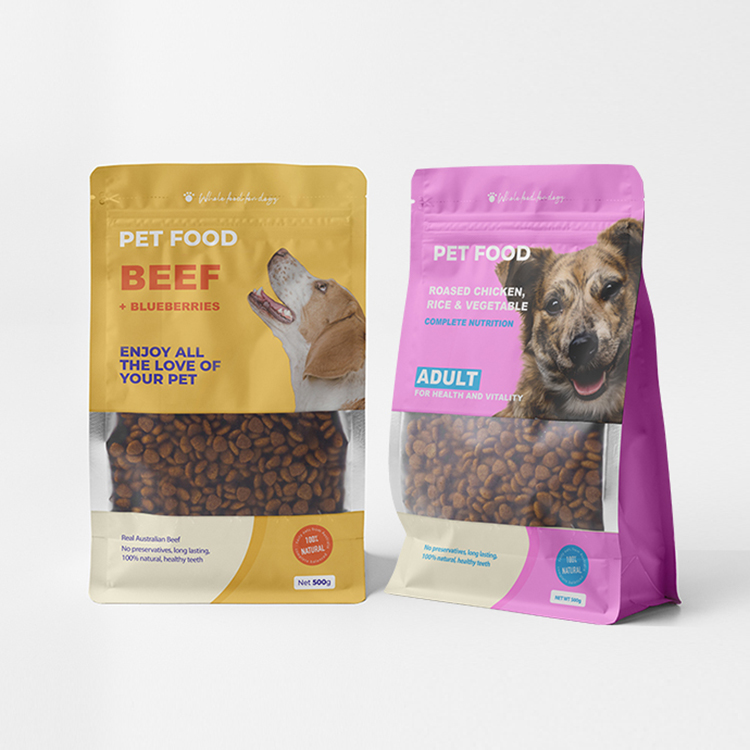In the world of pet care, pet food bags play a crucial role. They are not just simple containers for storing pet food but are designed with various features to meet the specific needs of pet owners and their furry friends. Whether it’s keeping the food fresh, ensuring easy storage, or being environmentally friendly, pet food bags come in a wide range of options.
Types of Pet Food Bags
Stand – Up Pet Food Bags
Stand-up pouches are very convenient for pet food packaging. They have a flat bottom and are often gusseted, allowing them to stand upright on a shelf or counter. This makes pet food easily accessible and provides retailers with a better display option. Stand-up pouches can be made from a variety of materials, including plastic and laminated paper. They often feature zippers or resealable closures, helping to keep food fresh after opening.
Zip – Lock Pet Food Bags
Ziplock bags are known for their easy-to-use, resealable closure. Typically made of plastic and available in custom sizes, small ziplock bags are perfect for storing pet treats, while larger bags are ideal for portioning pet food for travel or short-term storage. The ziplock bag’s sealing mechanism creates a tight seal, preventing air and moisture from entering, helping to preserve the quality and freshness of pet food.
Airtight Pet Food Bags
Airtight bags offer maximum protection from air, moisture, and insects. They utilize special sealing technology and materials to create an airtight barrier. These bags are ideal for long-term pet food storage. Airtight pet food bags can be made from thick plastic or laminated materials. They often feature advanced sealing systems, such as vacuum-sealed lids or double zipper closures.
Characteristics of pet food packaging
Freshness
Pet food deteriorates quickly if exposed to oxygen and moisture. Therefore, pet food bags with good oxygen and moisture barriers are crucial. Materials like aluminum-plastic composite films offer excellent oxygen barriers. These films have a thin layer of aluminum on the surface, which acts as a barrier, preventing oxygen from reaching the food. A moisture-proof coating on the plastic or paper bag also plays a crucial role.
Convenience
Pet food bags should be easy to open and close. Bags with tear-off or pre-cut openings make it easier for pet owners to access food. Some bags also have easy-grip closures for pet owners with limited mobility.
Safety
Pet food bags must be made from food-grade materials. This ensures that no harmful chemicals leach into the pet food. Food-grade plastics are tested and approved for direct food contact. Paper bags used for pet food are also processed for safety.
Environmental Impact of Pet Food Bags
Plastic Waste
Using traditional plastic pet food bags creates plastic waste. Biodegradable alternatives are now available. Choosing these eco-friendly materials can reduce environmental impact. Recycling plastic pet food bags is also an option. By discussing plastic waste and its alternatives, we cater to the purchasing intentions of environmentally conscious individuals interested in sustainable pet food bag options.
Recycling
Plastic materials can be recycled into new plastic products, and paper bags can be recycled into new paper. Some pet food brands are also exploring upcycling programs, transforming used bags into other useful items.
Pet food bags are an essential part of the pet care industry, and come in a wide variety. From materials and functionality to design and environmental impact, there are numerous factors to consider. Whether you’re looking for fresh food, convenience, or environmental friendliness, there’s a pet food bag to suit your needs.
Post time: Aug-01-2025







